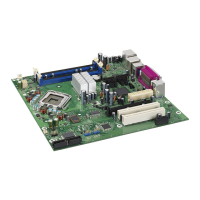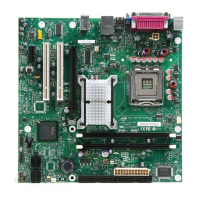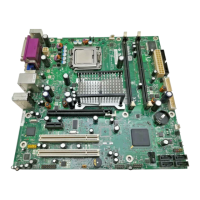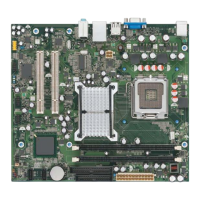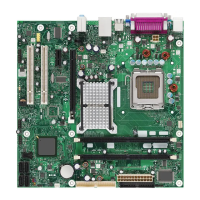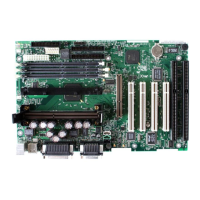Intel Desktop Board D955XBK Technical Product Specification
24
1.6 Discrete Serial ATA Interface (Optional)
As a manufacturing option, the board provides a Silicon Image Sil 3114 Serial ATA (SATA)
controller and four connectors (that support one device per connector) for SATA devices. These
connectors are in addition to the four SATA connectors of the ICH7-R SATA interface.
The Sil 3114 controller uses the PCI bus for data transfer and provides a maximum data transfer
rate of up to 1.5 Gbits/sec. The discrete SATA interface supports the following RAID levels:
• RAID 0
• RAID 1
• RAID 0+1
For information about Refer to
RAID levels Section 1.5.2.3, page 23
The location of the discrete SATA RAID connectors Figure 19, page 56
1.7 PCI Express Connectors
The board provides the following PCI Express connectors:
• One PCI Express x16 connector. The x16 interface supports simultaneous (full duplex)
transfers up to 8 GBytes/sec. Single-ended (half duplex) transfers are supported at up to
4 GBytes/sec.
• One Secondary PCI Express x16/x4 bus add-in card connector: The board provides a PCI
Express add-in card connector in the form of a physical x16 connector with electrical routing of
x4. It is important to note that this connector is an electrical equivalent of a PCI Express x4 bus
add-in card connector. This connector supports x4 and x1 PCI Express add-in cards.
• One PCI Express x1 connector. The x1 interface supports simultaneous transfers up to
500 MBytes/sec.
#
INTEGRATOR’S NOTE
Although the PCI Express specification allows x16 cards to auto-negotiate down from x16 to x4
and x1 and may function properly, such configurations have not been validated on this board.
Please consult your add-in card vendor prior to attempting to use a PCI Express x16 add-in card in
this connector.
The PCI Express interface supports the PCI Conventional bus configuration mechanism so that the
underlying PCI Express architecture is compatible with PCI Conventional compliant operating
systems. Additional features of the PCI Express interface includes the following:
• Support for the PCI Express enhanced configuration mechanism
• Automatic discovery, link training, and initialization
• Support for Active State Power Management (ASPM)
• SMBus 2.0 support
• Wake# signal supporting wake events from ACPI S1, S3, S4, or S5
• Software compatible with the PCI Power Management Event (PME) mechanism defined in the
PCI Power Management Specification Rev. 1.1
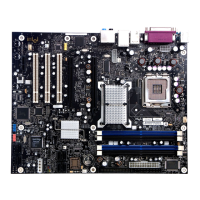
